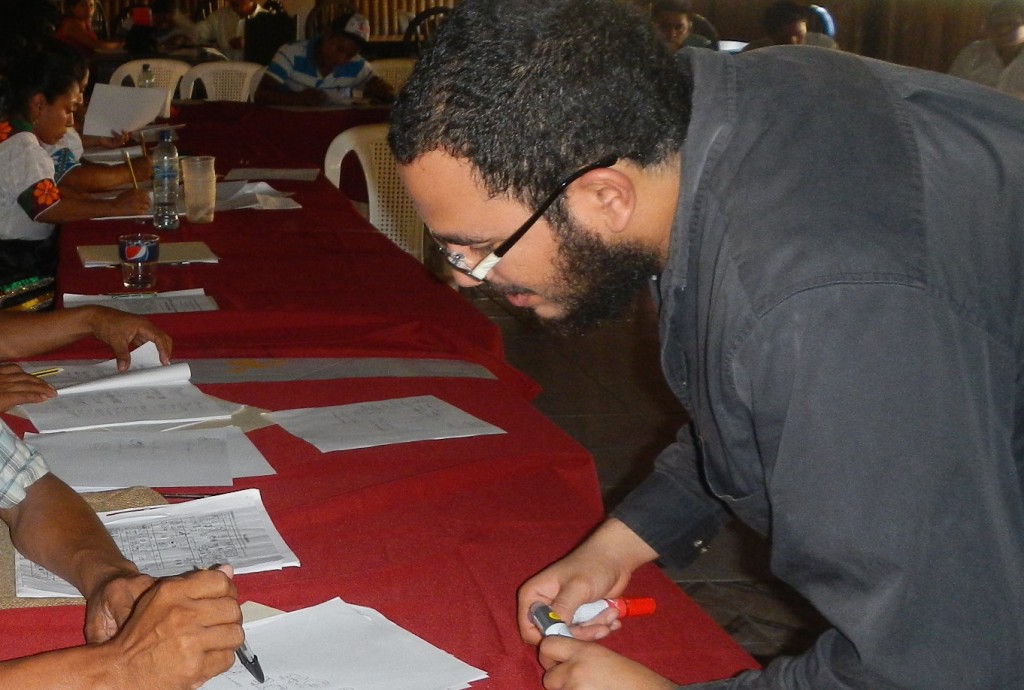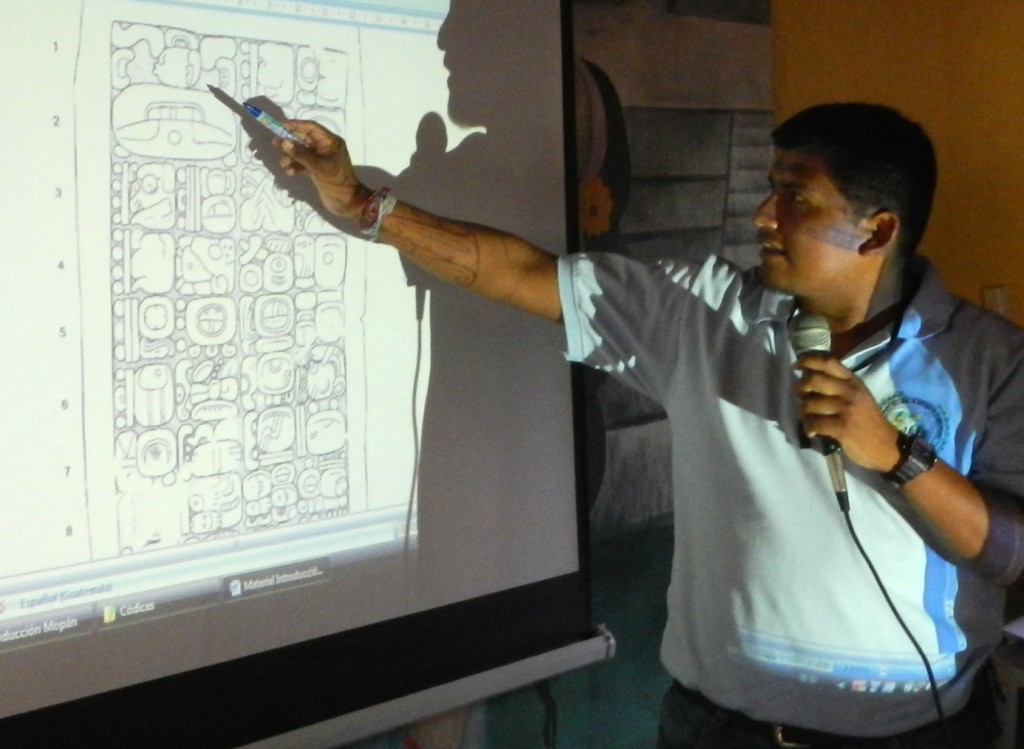During three days (October 1-3 or 3 Muluk-5 Chuwen) an introductory workshop of Maya epigraphy took place for Mopan Maya in San Luis, Petén. Mopanes arrived from Petén and Belize, as well as some Q’eqchi’ speakers, altogether more than 35 participants.
The workshop was inspired by one of the groups of participants at the 2nd International Congress of Maya Epigraphers. The Mopan Mayas that attended the congress, led by the president of the Mopan Linguistic Community, Otoniel Caal, assumed the responsibility of spreading knowledge of Maya epigraphy among his colleagues from Petén and Belize. He made contact with one of the groups of teachers from the congress, the Sak Chuwen Group.
Durante tres días (1-3 de octubre/ 3 Muluk – 5 Chuwen) se estuvo realizando un taller introductorio a la epigrafía maya para los mayas mopanes, en San Luis, Petén. Llegaron mopanes de Petén y Belice, así como algunos hablantes del idioma Q’eqchi’. Fueron más de 35 los asistentes.
El taller fue motivado por uno de los grupos de participantes que asistió al Segundo Congreso Internacional de Epigrafistas mayas. Los maya mopanes que asistieron al congreso, liderados por el presidente de la Comunidad Lingüística Mopan, Otoniel Caal, asumieron la responsabilidad de continuar difundiendo el conocimiento de la epigrafía maya entre sus compañeros de Petén y Belice y se contactaron con uno de los grupos de facilitadores que conocieron durante el congreso, el Grupo Sak Chuwen.
The teachers that came to share their knowledge included Moisés Toma, Maya Ixil student of linguistics from Cotzal, in his first workshop as teacher; and myself, Alejandro Garay, archaeologist and Sak Chuwen teacher for many tunes.
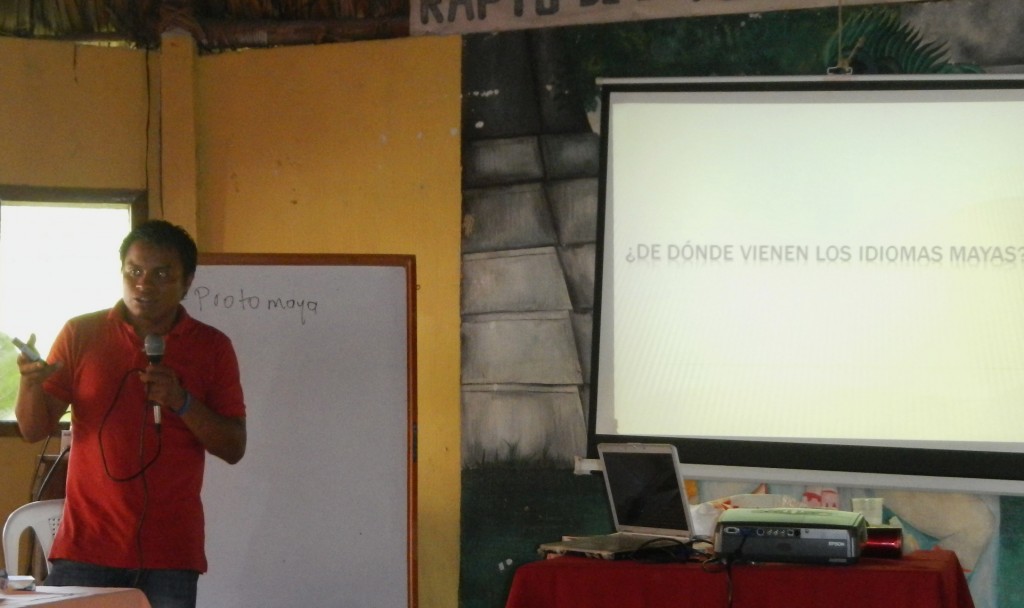
Moisés Toma, Ixil Maya from the highlands, shares his knowledge of Mayan linguistics with his Maya brethren from Petén.
The workshop had a classroom part that took two days, during which various themes were explored, from the way of reading and writing with glyphs to basic knowledge of the Maya calendars (Long Count, Tzolk’in, and Haab). All the participants learned to write words in Mopan and were able to read many examples taken from texts written on stone as well as in the codices.
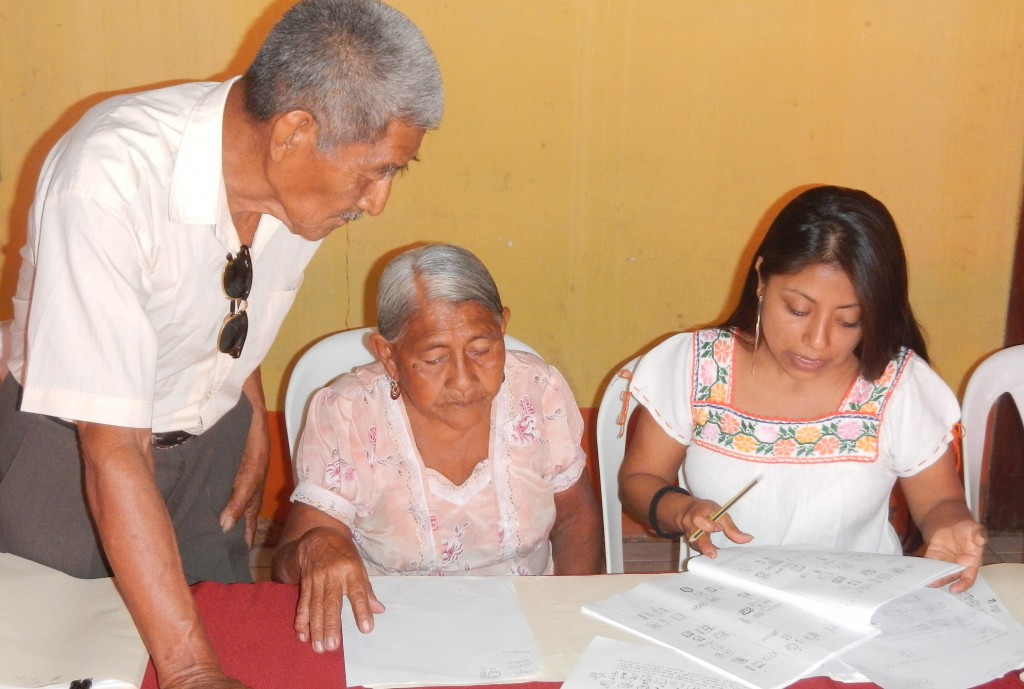
Sandra Yat, who attended the congress in Ocosingo, shares her knowledge with elders who came from Belize.
To understand better the dynamic of the calendars, they did various activities like forming moving circles of participants to demonstrate how the Tzolk’in works, with an inner circle of numbers (1-13) and an outer circle of the 20 day names.

The “spinning wheels” exercise to learn and better understand the Tzolk’in, the sacred calendar of 260 days.
Also, they drew the date in the Long Count of the final day of the classroom portion of the workshop.
The third day, a visit was organized to put into practice the acquired knowledge, going to see real texts, written in stone, at the Archaeological Museum “Juan Pedro Laporte” of Southeast Petén and at the site of Ixkun, located in the heart of Mopan territory.
At Ixkun, Stelae 1 and 2 were viewed, on which certain of the participants were able to identify various glyphs that they had learned during the classroom part of the workshop. There was also some discussion of the architecture of the site, including the wide roadways and an E-Group complex.
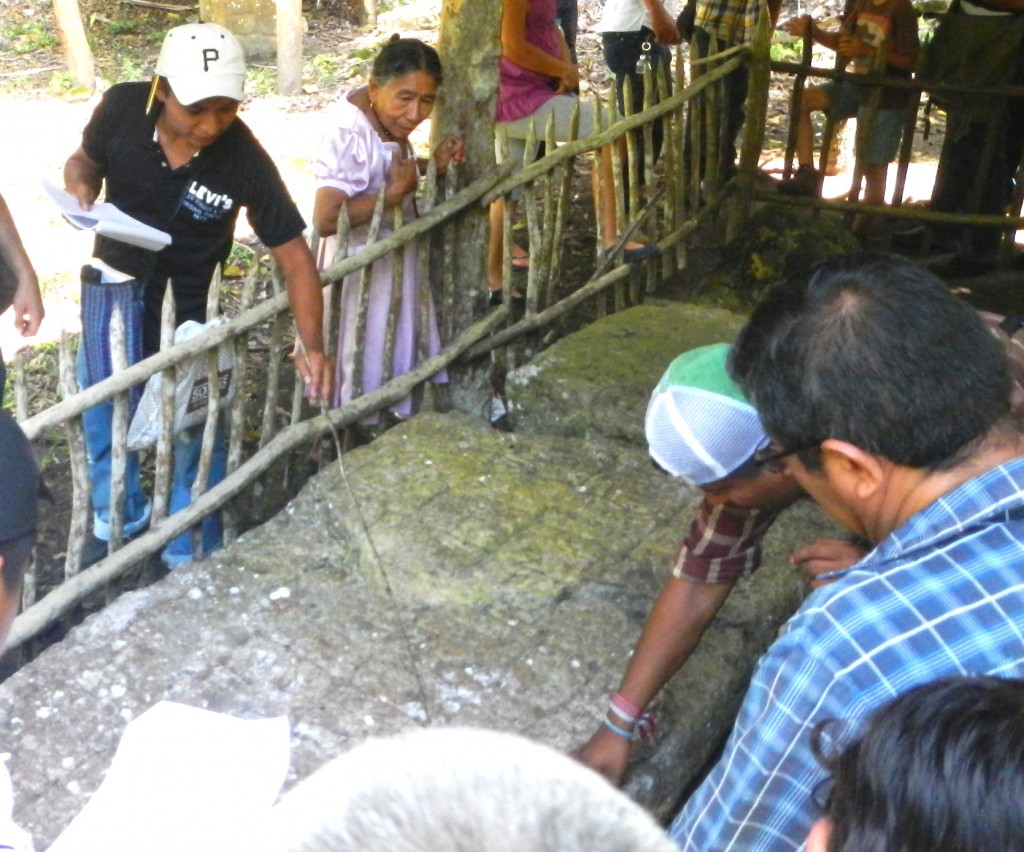
Putting in practice what had been learned in the classroom, reading the Long Count of Stela 2 in Ixkun.
I was also able to hand over some documents that dealt with the history of Petén, that the Mopanes now keep in their archives at the Mopan Linguistic Community headquarters in San Luis.

Handing over to Otoniel Caal Grant Jones’ book on the conquest of the Itzas and the Relación of Villagutierre y Sotomayor on the conquest of Petén.
It was an unforgettable experience for all.
Thank you.
Alejandro Garay, Sak Chuwen Group
 Los facilitadores que llegaron a compartir sus conocimientos fueron Moisés Toma, en su primer taller como facilitador, maya Ixil de Cotzal, estudiante de lingüística mayance, y Alejandro Garay, investigador en arqueología, facilitador desde hace algunos “tunes” de Sak Chuwen.
Los facilitadores que llegaron a compartir sus conocimientos fueron Moisés Toma, en su primer taller como facilitador, maya Ixil de Cotzal, estudiante de lingüística mayance, y Alejandro Garay, investigador en arqueología, facilitador desde hace algunos “tunes” de Sak Chuwen.

Moisés Toma, maya ixil de las tierras altas, comparte sus conocimientos de lingüística maya con los hermanos mayas de Petén.
El taller tuvo una parte teórica, que tomó dos días, durante los cuales se estudiaron varios temas, desde la forma de leer y escribir con los glifos mayas, hasta el conocimiento básico de algunos de los calendarios mayas (Cuenta Larga, Tzolk’in, Haab’). Todos los participantes aprendieron a escribir palabras en Mopan y pudieron leer muchos ejemplos tomados de los textos escritos en piedra, así como de los códices.

Sandra Yat, que participó en el congreso en Ocosingo, comparte sus conocimientos con los abuelos venidos de Belice.
Llevaron a cabo varias actividades, como formar círculos en movimiento con la participación de los asistentes, con el fin de mostrar la manera en la que funciona el Tzolk’in, con un círculo interno de números (del 1 al 13) y un círculo externo constituído por los 20 nombres de los días.

Durante la “rueda dinámica” para entender mejor el funcionamiento del Tzolk’in/Cholq’ij, el calendario sagrado de 260 días.
También se anotó la fecha en Cuenta Larga de la fecha en que culminamos la parte teórica del taller.
El tercer día se organizó una visita para poner en práctica los conocimientos adquiridos, yendo a ver textos reales, escritos en piedra, tanto en el Museo Arqueológico del Sureste de Petén “Juan Pedro Laporte”, como en el sitio de Ixkun, que se encuentra en pleno territorio mopán.
En Ixkun se vieron las Estelas 1 y 2, de las cuales se hicieron algunos comentarios por parte de los participantes, que lograron identificar varios de los glifos en los monumentos durante la parte teórica como durante la visita. También se habló un poco sobre la arquitectura del sitio, incluyendo las calzadas así como de su conjunto “Grupo Tipo E”.
También se hizo entrega de algunos documentos que hablan sobre la historia del Petén, que los mopanes ahora tienen en el acervo bibliográfico de la ALMG-Comunidad Lingüística Mopan, en San Luis.

Entregando a Otoniel, copias del libro de Grant Jones sobre la conquista de los Itzaés y la Relación de Villagutierre y Sotomayor sobre la conquista del Petén.
Fue experiencia inolvidable para todos.
Gracias.
Alejandro Garay, Grupo Sak Chuwen



